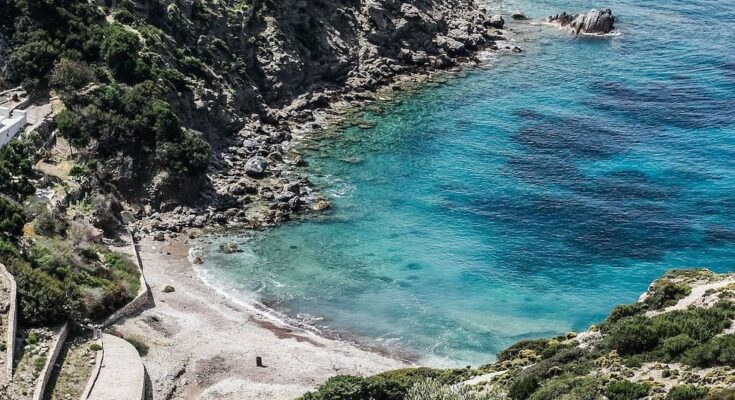Lipsi, a tiny and isolated Greek island in the Dodecanese, is one of those perfect Aegean islands to visit in order to get away from stress and the daily routine of life.
The French newspaper Le Figaro has spotlighted Lipsi, a constellation of 30 islets, in its new list of Greece’s “secret” islands that stand out in 2024, dubbing them “beautiful strangers.”
Le Figaro describes Lipsi’s exotic islets, resembling confetti, as possessing an otherworldly beauty that deeply enchants visitors, highlighting the unexplored, picturesque “corners” of the Aegean ready to take center stage.
Fotis Mangos, the mayor of these Dodecanese islets, emphasizes, “Our priority, alongside preserving natural beauty, is protecting the environment and creating quality living conditions for both residents and tourists. Through various initiatives, we have made Lipsi a model of water adequacy despite nationwide drought conditions.”
Low hills and valleys, as well as a rocky coastline and several bays, are part of the landscape of Lipsi.
Cars and roads are not common on the island, therefore most of the action takes place along the pedestrian seafront promenade. A small fishing port and several must-visit tavernas can also be found there.
In the town (Chorio), one can taste the famous octopus dishes of the island in one of the many ouzeries or fish restaurants there. At night, these venues turn into meeting places where people can to go for a drink and live music.
Lipsi is a small island, so it is quite easy to move around by bike or even by foot. Despite its size, however, there are many churches and monasteries on the island. Locals even say that it’s possible that every family of Lipsi could have a chapel of their very own.
Sights on the Greek island of Lipsi
Koimisis tis Theokou, an austere Byzantine church dating back to the 7th or 8th century AD, is home to an icon of the Virgin Mary holding a crucified Jesus. The church is on the bay that dominates the port, surrounded by a lush landscape with natural springs.
The Archaeological Collection of Lipsi, in the main village, showcases clay artifacts and ancient inscriptions from the Classical, Hellenistic and Christian periods.
Most of the beaches of Lipsi are close to the port. The ones that are further away, however, are still close and easy enough to reach by taxi or motorbike.
One of the most beautiful sandy beaches of the island, Kampos — with clear, shallow waters, lots of natural shade and a quiet serenity — is ideal for families with kids.
Platis Gialos, although one of the most well-known beaches, is not as crowded as one might expect. Here it is easy to spot wild ducks cavorting in the sea. The church of Agios Konstantinos, right behind the beach, although not always open, is one of the prettier spots anywhere on the island.
Another must-see place is Hoxlakoura, one of the largest beaches in Lipsi, with white pebbles and crystal water, which is loved by adults and youngsters alike.
Since there is no direct daily ferry or air connection to the island via mainland Greece, the options to get there would include a ferry trip from other Dodecanese islands such as Leros, Patmos, Rhodes, Kalymnos, and Kos.



